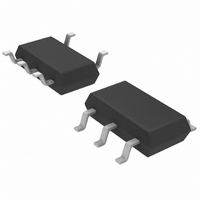LT1932ES6#TR Linear Technology, LT1932ES6#TR Datasheet - Page 7

LT1932ES6#TR
Manufacturer Part Number
LT1932ES6#TR
Description
IC LED DRIVR WHITE BCKLGT TSOT-6
Manufacturer
Linear Technology
Type
Backlight, White LEDr
Datasheet
1.LT1932ES6TRMPBF.pdf
(16 pages)
Specifications of LT1932ES6#TR
Constant Current
Yes
Topology
PWM, Step-Up (Boost)
Number Of Outputs
1
Internal Driver
Yes
Type - Primary
Backlight
Type - Secondary
White LED
Frequency
800kHz ~ 1.6MHz
Voltage - Supply
1 V ~ 10 V
Voltage - Output
36V
Mounting Type
Surface Mount
Package / Case
TSOT-23-6, TSOT-6
Operating Temperature
-40°C ~ 85°C
Current - Output / Channel
40mA
Internal Switch(s)
Yes
Efficiency
80%
Lead Free Status / RoHS Status
Contains lead / RoHS non-compliant
Other names
LT1932ES6TR
Available stocks
Company
Part Number
Manufacturer
Quantity
Price
APPLICATIO S I FOR ATIO
Open-Circuit Protection
For applications where the string of LEDs can be discon-
nected or could potentially become an open circuit, a zener
diode can be added across the LEDs to protect the LT1932
(see Figure 4). If the device is turned on without the LEDs
present, no current feedback signal is provided to the LED
pin. The LT1932 will then switch at its maximum duty
cycle, generating an output voltage 10 to 15 times greater
than the input voltage. Without the zener, the SW pin could
see more than 36V and exceed its maximum rating. The
zener voltage should be larger than the maximum forward
voltage of the LED string.
Dimming Using a PWM Signal
PWM brightness control provides the widest dimming
range (greater than 20:1) by pulsing the LEDs on and off
using the control signal. The LEDs operate at either zero or
full current, but their average current changes with the
PWM signal duty cycle. Typically, a 5kHz to 40kHz PWM
signal is used. PWM dimming with the LT1932 can be
accomplished two different ways (see Figure 6). The
SHDN pin can be driven directly or a resistor can be added
to drive the R
If the SHDN pin is used, increasing the duty cycle will
increase the LED brightness. Using this method, the LEDs
can be dimmed and turned off completely using the same
control signal. A 0% duty cycle signal will turn off the
LT1932, reducing the total quiescent current to zero.
V
IN
Figure 4. LED Driver with Open-Circuit Protection
C1
4.7 F
SET
pin.
5
U
SHDN
R
V
SET
IN
6
4
R
1.50k
LT1932
6.8 H
SET
U
L1
GND
SW
LED
1
2
D1
3
W
15mA
24V
U
1932 F04
C2
1 F
If the R
decrease the brightness. Using this method, the LEDs are
dimmed using R
SHDN. If the R
the approximate value of R
the “high” value of the PWM signal):
In addition to providing the widest dimming range, PWM
brightness control also ensures the “purest” white LED
color over the entire dimming range. The true color of a
white LED changes with operating current, and is the
“purest” white at a specific forward current, usually 15mA
or 20mA. If the LED current is less than or more than this
value, the emitted light becomes more blue. For color
LCDs, this often results in a noticeable and undesirable
blue tint to the display.
When a PWM control signal is used to drive the SHDN pin
of the LT1932 (see Figure 6), the LEDs are turned off and
on at the PWM frequency. The current through them
alternates between full current and zero current, so the
average current changes with duty cycle. This ensures
that when the LEDs are on, they can be driven at the
appropriate current to give the purest white light. Figure
5 shows the LED current when a 5kHz PWM dimming
control signal is used with the LT1932. The LED current
waveform cleanly tracks the PWM control signal with no
delays, so the LED brightness varies linearly with the
PWM duty cycle.
R
10mA/DIV
PWM
2V/DIV
V
PWM
I
LED
SET
Figure 5. PWM Dimming Using the SHDN Pin
R
pin is used, increasing the duty cycle will
SET
SET
•
SET
pin is used to provide PWM dimming,
0 15
V
.
MAX
and turned off completely using
V
50 s/DIV
PWM
–
1
should be (where V
1932 F05
LT1932
MAX
7
1932f
is













